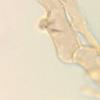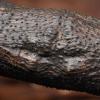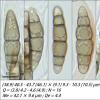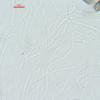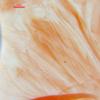
15-12-2025 21:11
 Hardware Tony
Hardware Tony
Small clavate hairs, negative croziers and IKI bb

15-12-2025 15:54
 Johan Boonefaes
Johan Boonefaes
Unknown anamorph found on the ground in coastal sa

15-12-2025 15:48
 Danny Newman
Danny Newman
Melanospora cf. lagenaria on old, rotting, fallen

15-12-2025 07:05
 Danny Newman
Danny Newman
Pseudosclerococcum golindoi (det: Zotto)near Cosb

15-12-2025 11:49
 Danny Newman
Danny Newman
ITS sequences from the following two collections B

15-12-2025 07:09
 Danny Newman
Danny Newman
indet. Rutstroemiaceae sp. on unk. fallen leavesMc

15-12-2025 12:34
 Danny Newman
Danny Newman
indet. Rhytismataceae on oak leafnear Purchase Roa

09-12-2025 12:06
 Andgelo Mombert
Andgelo Mombert
Bonjour,Je recherche l'article concernant Hypobryo
I found an interesting dothideomycete in an old stream bed near water. It resembles description of T.lineolatispora with the striate suface of the spores but I'm kinda short on literature with these. Substrate is some old wooden stick of unknown origin that appeared to be waterlogged some time in the past. Would someone perhaps have a bit more insight or have another suggestion?
22.3.2025, floodplain lowlands forest, Ižakovci, Slovenia.
Best regards!

this fits well T. wegeliniana Holm described in 1988 by Holm & Holm (studies in Lophiostomataceae). Sorry, I don't have the paper in pdf format.
T. lineolatispora is indeed very similar by its ascospore morphology but was found in a mangrove in Mexico. If proved identical, it would be a later synonym (1992).
Best,
Jacques
Thanks for the reply! I was just reading that paper before the post and it bothered me that I didn't find any info on the spore striation? But otherwise I was thinking the same and agree on the written. Also striation is sometimes barely visible and it might be also overlooked? I later found an older chat here on forum where striation is mentioned. What is on the other hand difference with T.hydrophila?

to my knowledge, the striated ascospore wall is the most reliable characteristic distinguishing T. wegeliniana from T. hydrophila. I agree it may be easily overlooked.
T. hydrophila is an ill-defined taxon, variously interpreted in the past, thus ambiguous.
All phylogenetic results trend to show Trematosphaeria is paraphyletic, when not polyphyletic. It was an attractive name accommodating fairly different species and unfortunately these two aquatic taxa were not studied phylogenetically. Welcome to the world of freshwater ascomycetes!
Jacques
Yes, it seems like there is still much clarification that needs to be done with many of these small ones, same as with larger ones on the other hand. But as a former hobby fisherman it's always a pleasure to find ones associated with water.
Best regards!
